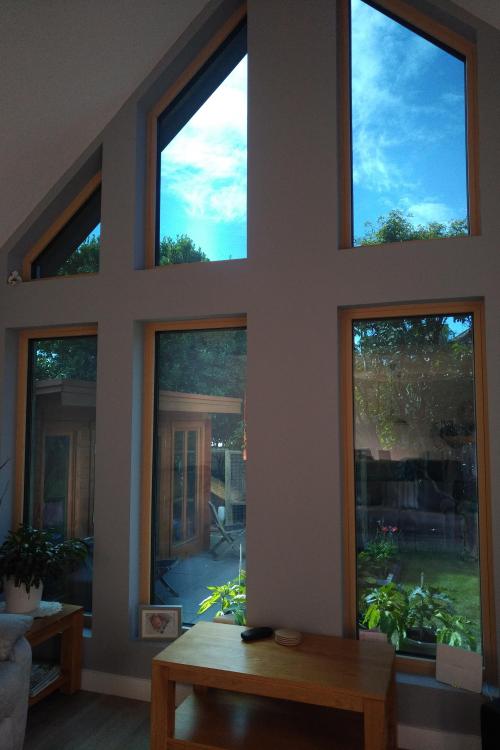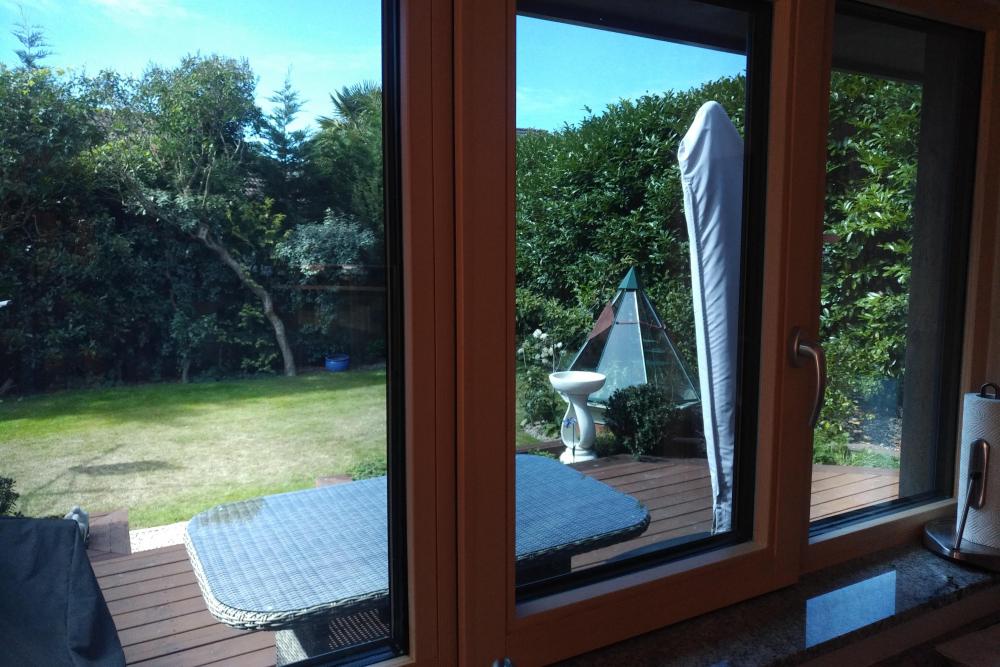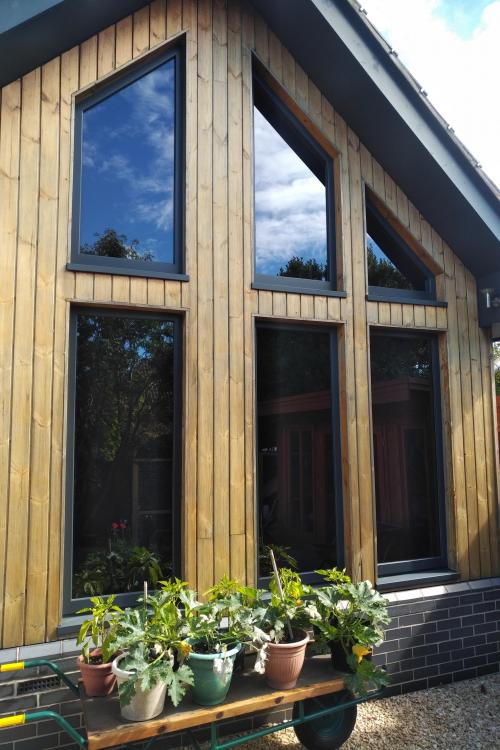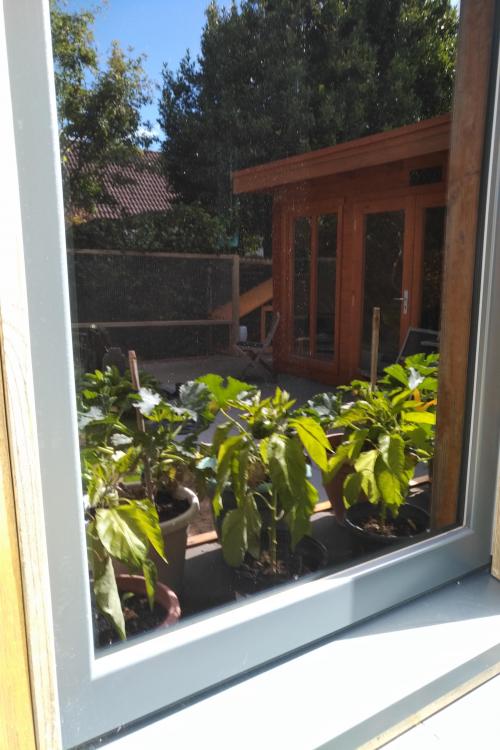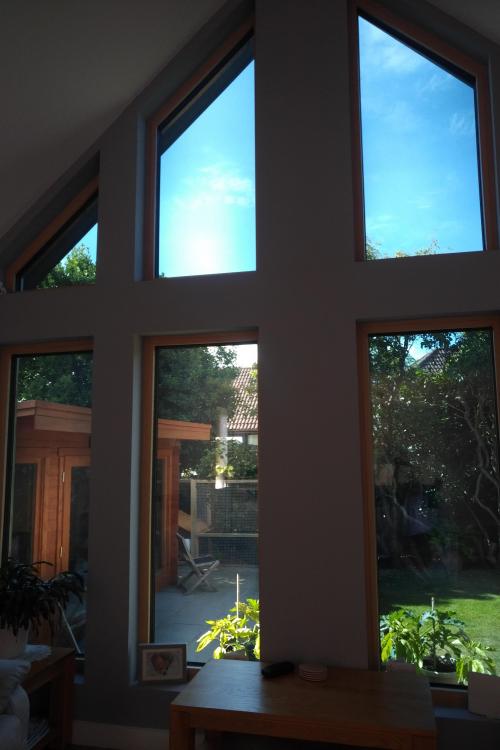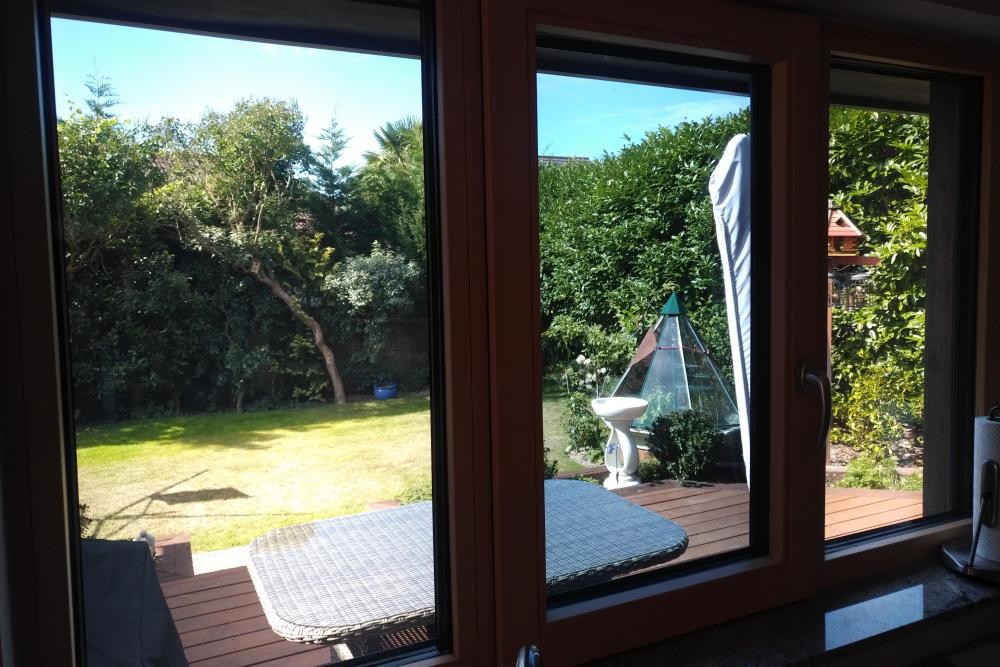Leaderboard
Popular Content
Showing content with the highest reputation on 08/04/20 in all areas
-
TBH I now use Wickes Tough and Washable and it is so much better than Dulux. Goes on well, finish is superb with a short pile Harris Pro roller and coverage is very good. https://www.wickes.co.uk/Wickes-Pure-Brilliant-White---No-0-Tough+Washable-Matt-Emulsion-Paint---5L/p/121920 Compared it to Dulux Eundurance and it is much better - at £18 for 5 litres with a trade card you can’t go wrong.2 points
-
2 points
-
Cracking crops up on a petty regular basis and it can cause concern to say the least when it's your home. It is a pretty complex subject but here is an attempt at a lightheated over view of some of the in's and outs. I have caveated some stuff here and there. Looking at the photo (in insolation) that Bri44 posted the crack is relatively small in nature. If you can stick your finger in a crack then you should take action and seek advice. If you notice the crack is getting slowly wider or translating (moving sideways say) over perhaps a few months then think about getting some advice but don't leave it, if days or less then act quickly and take professional advice. You need to be a bit like Columbo here. Strangely, small cracks are often harder to diagnose than big ones. There may be only one or two cracks or there may be lots of small hairline cracks. Often when you have say one big crack the causes are more easily indentified. The stating point is to recognise that houses move all the time. The materials they are constructed from tend to be different - timber - steel - concrete - brick etc and all these materials age and behave in different ways. They expand and contract differently when the temperature goes up or down for example. The house sits on the ground and this too moves about. Bri44 has a clay soil. Clay behaves in a different way from say sandy / gravel type soils. One key difference is that they can shrink and swell depending on how much water they have in them (moisture content). With that in mind some of the things you look at are: Is the site level? Are the founds at the same or different depths - If you have a dry summer then the upper layers of clay tend to be drier than the ones below so they shink by different amounts. Thus the foundations go up and down by different amounts and this leads to differential movement.. which can cause cracking. Do you have any trees or hedges near the house. When in leaf the vegitation sucks the water out the clay soil and causes it to shrink. If you have cut down a tree then it can take a number of years for the soil to read adjust and it will move a bit (usually swell) when it does so. If you have a leaking drain then it can cause the clay to swell locally and this can lift the foundation up while the rest is staying still or shrinking or moving down under perhaps dry summer conditions. Again, if you have installed a new drain that is deep with say pea gravel round it you can sometimes drain the clay and this can cause it to shrink. There are a multitude of factors to consider so it's not always easy. If you have a house with very deep foundations at one end and shallow ones at the other and with a lot of infilled ground round the house at the deep end then as the fill settles over time it can drag down the walls a bit, add load to the founds via the dragging on the walls and they settle a bit more. Often if you are designing piles with made ground you'll examine this effect closely. Moving up to the superstructure. The type and shape of the cracks can tell you a bit. You have a look at where any movement joints are placed in the walls and if they are in the right location. Has the building been altered? If you have knocked out a load bearing wall and put in a beam you often change the way the founds are loaded and this too can result in a bit of cracking. Importantly you want to look at the rest of the house. Are the roof tiles out of alignment. Go inside the attic and look here. Small movements at ground level can be amplified up at roof level so are sometimes easier to spot. Are the doors and windows working ok.. have you notice they are starting to jamb in places? Has the house been left unheated or over heated... are the floors level. Is there other development going on, under or near your house.. The above is just a flavour of what you want to look at. Once you gather all this information you hope that you'll have some idea as to the causes. Then you work out if you need to do anything or just monitor the situation and see if things settle down. More often than not for small cracks it a case of keep an eye on it. You can use "tell tales" or precise levelling techniques to montor movement before you resort to drastic measures. For the curious there is a good document published by the BRE (BRE251) which gives some good guidance and goes some way towards categorising the size and type of cracks. Lastly, Columbo always solves even the most complex of cases. But with small cracks you may just end up with a short list of suspects but no arrest and subsequent conviction.2 points
-
2 points
-
First all my apologies as this blog entry is about about a year late given that we moved in August 2019, but better late than never as they say ! Moving on from finishing the shell, we moved onto completing the inside. We knew from previous experience this would be the most intensive part of the build and had tried to make as many decisions up front as we could regarding bathrooms, kitchens and flooring, nevertheless there were still a lot of decisions to make. Everything went broadly to plan with the electricians, plumber, carpenters and decorator all working well round each other and coordinated by the builder who had put up the shell. There was an awful lot of work ordering everything and making sure that material was on-site at the right time. There was the occasionally thing that didn't go to plan, most notably the kitchen where i had the bad luck to have my kitchen delivered with many missing and damaged components and a supplier who took 8 weeks to sort everything out. The trades were proactive and happy to suggest how we might achieve what we were looking for which was a great help, but by the end of the project we were both fit to drop. Self build is a very rewarding but exhausting business. Here are some pictures of the finished house. There is still a little bit of landscaping work, the fencing and some furniture to sort out and I guess at some stage we will sort out some blinds to replace the high-tech cardboard that is doing the job at the moment. Following the build, we sorted out the VAT refund - 500+ invoices and a £32,000 refund for VAT. I ordered just about everything and given the number of invoices I got someone to prepare the submission to HMRC this for me which was money well spent. The electrical certificate, certificate for the unvented cylinder, building certificate and warranty were sorted out and finally the last submission for the CIL exception was made. The Dog seems to like her new home ! Still a bit of work to do in the garden View from the study window1 point
-
I think I might offer to pick the guys up from their houses and take them to site. Maybe pleasure them during their breaks (to the extent that distancing rules allow), take them to the pub after work, buy all the drinks, drop them back home and tuck them into bed. Still cheaper and (perhaps) less humiliating than £1,200.1 point
-
OK a bit late for the update, but they are asking for £1,200 for parking. Amazingly @Thorfun was closest and also overestimated by £600. Trophy symbol for him, sad face for the rest of you.1 point
-
Thanks for all the feedback. I think the number of different responses just goes to show how much of a grey area this really is. I guess it depends on the local authority. I have asked our planning officer and this is the response we received: You are correct, what does or doesn't constitute 'commencement of development is indeed a grey area and numerous cases have been argued in the courts! Each development /site is different, however generally we would advise that excavating some ground for the purposes of digging foundations would be acceptable. I would advise that your building control officer document this for your future reference. The Planning Authority would not normally issue confirmation that a development had lawfully commenced, the discharge of any pre commencement conditions and the undertaking of some form of 'development documented by a building control officer would generally suffice. Fun fun fun... after discussing this with our building control officer earlier today, we've decided that we'll expose the footings to the side of the two existing structure on site, both of which we'll be keeping renovating and incorporating into the new build, for the purpose of documenting the existing foundations so the new foundations can be designed. He's then going to pop over in the afternoon and document the findings. The fact we already have a 4 ton excavator permanently on site, may also help, I'll make sure it's in the photos. Thanks again for all the feedback. D1 point
-
1 point
-
Use Loctite 55 instead of PTFE - its a far better product. And as no one else has said it yet and have seen a few pics with them - Real Plumbers use end feed fittings................? - Apart from the chap who commisioned my UFH ?1 point
-
If you are getting a local builder they may have a good idea of ground conditions / foundations needed. If not, ask Building Control.1 point
-
I assume that the SE is OK with a raft attached to your house which has a different kind of foundation? I guess this may need a couple of holes and maybe one extra one where the summer house goes. A summer house is likely to be a light wooden structure and probably doesn't need a soil survey at all, but if they are already on site, an extra hole won't cost much. Did the surveyors recommend 8 holes or the SE? The standard is 3-4 holes for a new house.1 point
-
1 point
-
Thin screwdriver to depress the ring on the fitting works but my keys seem to be thinner than the one you have there.1 point
-
Wickes Bathroom is really good too. Ignore some of the comments that it smells of cat wee..!! Only does that when you open a can then leave it half empty for a while somewhere warm ..!! Good shake of the can and it soon fades.1 point
-
I just had a soil survey done in Edinburgh. I had a guy recommended on here at just over £1000, but he wasn't available. I basically went on Google and sent the same email to five companies. Two came in at over £4000, two at around £2500 and one said they didn't do it, but recommended me a company who did it for just over £1000. I am still waiting to see the report before I recommend them to anyone. The high quotes often had absurd padding in them, such as £350 for a utilities report, even though it is on garden ground and I have a map of what is under it, or hundreds for H&S assessments etc. I would just send out asking for quotes, they all came back in a couple of days. I only needed 3 holes, so you might be nearer to £2000 or more if they need to know what is under the site before they drill. I paid over £4k for one arranged via an SE four years ago, when I looked back at it, around £1000 was because they weren't local and charged me for travel and subsistence, so I only checked local people this time. Edit - Just had another look at your original post. Why would you need 8 holes for an extension, that is crazy. I doubt most people have anything for an extension, they probably just dig down and match the existing foundations.1 point
-
That won't stop you buying another tin of glue the next time your in the plumbers merchants to go with the 5 you already got in your van1 point
-
Our DIY-Kitchen order (36 cabinets and endless panels) arrived on the exact date we agreed (we paid for Platinum delivery). The team of 2x guys did all the heavy lifting (plus, naturally, we helped) and did not bat a lid at our very rough terrain (we were digging patio at that moment). All items were very well packed in thick cardboard (we've recycled it all - tons and tons of cardboard). Three of 36 cabinets were missing, I logged a support ticket and from then on the communicaiton was quite good, we had a few very detailed exchanges, identified what's present and what's missing (mea culpa, I did not notice some accessories which were dropped inside cabinets), and received all the missing bits within 2x weeks. Checked every item once received (a day's work!), no damage discovered. So far very pleased with the look and quality. Generally found DIY Kitchens quite flexible and helpful - our built was severely delayed even prior to COVID, and then stopped for the lockdown, and all this time i have been in contact with them postponing the delivery again and again (and again, and again - a total of 7x times!!!). Eventually got it delivered on the dot.1 point
-
1 point
-
Not enough turns of tape then, simples. I was amazed when @Nickfromwales said to put 25 odd turns on a bib tap back plate. Works like a dream.1 point
-
1 point
-
The fun of a rainfall head. Though I wanted it I rarely use it tbh. Nothing against it and it looks great. If my lad has a shower he uses it all the time. Means when I go in and use the handset straight after I get the occasional nice cold drip from the water in the rainfall head.1 point
-
1 point
-
Sure that is not just the shower head draining down? They have an annoying habit of dripping for a long time, or start dripping in the middle of the night hours after last use.1 point
-
I really like the Wilko own brand scrubable paint, and not too expensive.1 point
-
1 point
-
1 point
-
Yes should be easy to cap that to test it. P.S it is handy having been doing plumbing for years and having a big box of assorted plumbing fittings (I never throw any away) so I can usually rummage in the box and cobble up something for most situations.1 point
-
Hep02 do a 45/135 degree bend. https://www.toolstation.com/hep2o-obtuse-bend-135o-single-socket/p78071?store=U2&utm_source=googleshopping&utm_medium=feed&utm_campaign=googleshoppingfeed&gclid=Cj0KCQjw6575BRCQARIsAMp-ksMSj_S-qjzI35-xpbwjrZ9dI1w-M82q8Mq5YLNUtZ621bprbh3HC4oaArK9EALw_wcB1 point
-
Is it cheaper NOT to pay for parking and agree to pay the fines instead ?1 point
-
Parking in Brighton is a nightmare and extremely expensive. So I’m going to say they’d need 3 parking bays booked out for an entire day. And then add a nice council ‘fee’ on top. And then an admin fee. Then a notification fee. All-in......I reckon £1800.1 point
-
Thanks for the plug @joth always happy to help.?? Glad to see you're getting your head round everything, and that's a really neat bit of wiring work in the cabinet (oh I can supply those too!!) @Thorfun building and wiring up the main cabinet isn't that difficult as long as you take your time and think about component locations and wiring before you start. I mount cabinets on an angled jig to do all the wiring and its much easier than trying to do it when they're on the wall. Let me know if you need any pointers.1 point
-
As far as I’m aware you generally have the least vapour permeable insulation on the inside with more permeable on the outer, so vapour travels out of the structure instead of being able to get in but cannot get out.1 point
-
1 point
-
Don’t forget to consider advertising some waste material on Facebook marketplace. My demo ended up costing me £zero, and I made some profit, as I sold most of the waste material. Paid for the JCB & driver to demo my building. Nearly everyone has Facebook now. my tips: 1. Only advertise one or two items at a time, otherwise you can get inundated with messages. 2. Don’t advertise decent stuff for free for collection, otherwise you’ll be inundated with messages. 3. Don’t overprice stuff. You won’t get £50 for a battered old stainless steel sink, but someone will take it for free. Don’t be greedy. 4. If you have a lot of metal sell to scrappy, (I made £500) otherwise If just a few bits folk will happily take it off you. 5. Broken slate tiles can be sold for garden borders. 6. Rubble And soil for backfill/building up land. Free for collection. 7. Timber joists etc - denailed - flew - I had like 6 queries within as many minutes of posting. 8. Stones and rocks for rockeries / dyking. 9. Old windows for sheds. 10. Always respond quickly and be nice to purchasers. They review you. I didn’t get any time wasters, probably because everyone’s traceable via Facebook. Gumtree less so. 11. You’ll be surprised what goes. It costs nothing to advertise it so nothing to lose by trying.1 point
-
My bespoke front door is solid oak boards but insulated as well, I don’t fancy veneer fir an outside door.1 point
-
I would check that with highways We ended up paving the whole 450m2 drive But originally the plan was for a tarmac strip like yours and gravel for the rest We contacted Highways and they stated any hard surface would be fine Cobbles pavers etc As long as it wasn’t loose1 point
-
Had my drive tarmaced 50mm 10mm stone only 180 sq m £3250, you will need two layers for a roadway I believe.1 point
-
As someone from the kitchens business I have read several posts here with interest and some point I would like to add to put in a counter reality. 1. Expecting furniture delivery without damages is frankly unrealistic. Bear in mind that made up units are mostly air, transported on road surfaces where the quality varies vastly and even a sudden braking incident a real cause for damage. Damages always occur and its a bit underhanded for retailers/suppliers to not set a realistic expectation for what may happen during deliver, consequences and realistic timescales for remedials. 2. Furniture doesn't always handle well. Most kitchen furniture will be handled onto a truck at the factory, off at a warehouse, back on at a warehouse and off at the clients house. Each event of handling brings potential risk of damage. Customers who aren't provided a realistic picture of the facts end up with unrealistic expectations and disappointment. 3. Furniture supply chains are often lengthy and much more complicated than what one imagines. There is no such thing as a kitchen made in Britain with doors usually arriving from Ireland, france or Italy, hardware from Germany, Austria or Italy, Chipboard sometimes locally sourced but from timber originating in Nordic or Baltic countries and the list goes on. The weakest link in this chain is usually the doors. 4. Packing kitchens better is definitely a solution but most manufacturers find a balance between the need to be eco-friendly (the best packing materials are not easily recycled and the most recyclable materials not the most robust to prevent damages) and cost sensitive. Often the view is that its cheaper to change a couple of doors on a kitchen than to spend an extra £75 on packaging which still doesn't guarantee anything. 5. Notification of damages - while yes typical period is 2-5 working days there is a good reason for this. Seldom does a fitter own up to dropping a door or panel or nicking it or incorrectly drilling something with the onus of paying for the replacement put firmly in the fitters court. So why would it be fair for the supplier to deliver a kitchen when requested by the customer and then allowing them weeks to report any damages that weren't a fault of the supplier. Our own kitchen manufacturers allow us a fair amount of time and our understanding with out fitters is to honestly tell us if they damage anything - we do not charge them for it but that gives us a real picture of how good our suppliers are with deliveries. 6. Poorly paid delivery teams. Fact. A lot of delivery drivers earn a pittance and cant be bothered if the goods on the load bed are lumps of cast iron or finely crafted furniture. The best deliveries are from companies that own their truck fleets and employ their delivery staff and this can be very expensive. The typical cost of a 12 ton truck to deliver a kitchen from Kent to Manchester with 2 man crew will be c £750 taking into account capital cost, running cost, wages & overtime and diesel. So on a high end bespoke kitchen this cost adds maybe 5% just to deliver the kitchen. Some companies go down the palletised route but it does not work for kitchens. 7. 100% perfect deliveries - Errors happens. A kitchen is typically a collection of components, units, panels etc that come together in the clients kitchen for the first time and have to be technically thought through correctly, ordered correctly, interpreted correctly by the order processors, manufactured correctly in the factory, picked and loaded correctly and unloaded correctly. It sounds more complicated than it it but the level of automation in British factories particularly is very very low making the process far more error prone than it ought to be. Just a reality. I dont want to be seen as defending some very poor practises but thats the reality. About 90% of our business is German kitchens and the rest British. We find that one in 3 kitchens has a remedial. The type and severity varies but none that are show stoppers. We put this down to be very technically sound, thorough with our processes, realistic with our customers and are probably at the upper end of the scale for correctness and completeness of our orders. I personally know of very many companies that are just shambolic. Hope this helps1 point
-
Ok - so if the wisdom of crowds holds then, given the guesses to this point, we have an average of: £557.18, without factoring in the parking fines idea - that feels high. Assuming a fine of £35 (worst case for Brighton & Hove higher, see below) if you pay early and Mr P is not toying with us by giving us the clue that if you paid early it would be cheaper to pay the fines - and, by extension that it would be more expensive to pay the full fine, then the range, per bay, is between £75 (3 days lower rate) and £210 (3 days full fine higher.) However we have no idea how many vehicles will need parking although we have a variety of guesses at that above. So if three days / 3 bays then worst case £630 and best case £225 so after careful consideration and trying to get a best estimate I think I will go for £400! Parking fines from Bright & Hove web site. Level of charge Amount of charge Discount charge if paid within 14 days from the date of the issuing of the notice Higher £70 £35 Lower £50 £25 Bus lane £60 £300 points
-
A couple of spaces...3 days... a few quid admin... £350?0 points
-
When I did an at exhibition in a small gallery in Nottingham a bit over a decade ago, it cost more to park the car for some time each day than it did to hire the gallery. So .. Brighton. Parking and a bit of digging. £400-500 ?0 points
-
They are a big developer. I found out the site manager while my house would have been built was busted for owning a large herbal plant farm in his house, they sacked him and upgraded the fork lift truck driver to site manager.0 points
-
For a connection of 3m? I cannot think that many Scots would agree with you!0 points
-
If I got a connection for £3094... I'd happily pay the parking for everyone involved. I'll guess 123.400 points
-
0 points
-
I think that's the two chimneys from the top of number 73, and is why your plot at 75 has a big hump on it and is twice as wide as it should be.0 points



